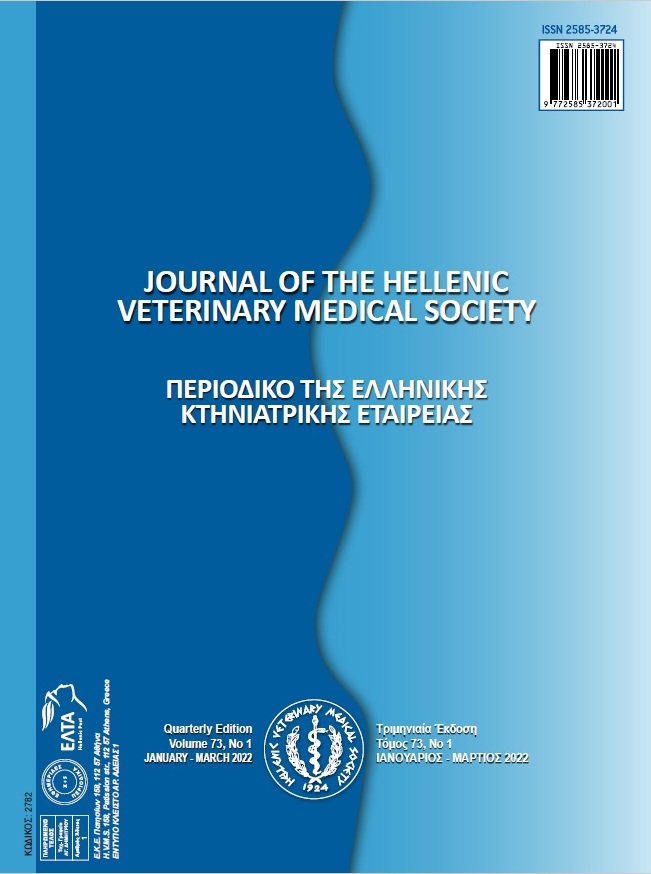Staphylococci and zoonotic potential : oral carriage and antibiotic susceptibility in stray dogs and cats in Algeria
Resumen
This study aimed at identifying species of staphylococci isolated from the oral cavity of dogs and cats, in Algeria, and to determine their antibiotic susceptibility.
Oral swabs were collected from 70 healthy animals (35dogs and 35cats) and were grown in Mannitol Salt Agar medium.Isolates were identified using API staph commercial kits and then confirmed with MALDI-TOF MS associated with SARAMIS software.Coagulase-positive staphylococci (CoPS) were tested for antibiotic susceptibility by disk diffusion method.
On the 70 sampled animals, 59 were carriers of staphylococci in the oral cavity and more than one species was detected in 11 of them. Seventy (70) staphyloccoccal isolates were obtained belonging to 10 defferent species. Coagulase-negative staphylococci (CoNS) were most prevalent (81.42% ),of which the dominant species was S. xylosus (40%).Other coagulase-negative species,such as S, simulans (14.28%), S ,sciuri (11.42%) , S. saprophyticus (10%),S. capitis (2.85%),S, cohnii subsp cohnii (1.42%), and S, epidermidis (1.42%) were also isolated.The remaining n.13 CoPS included : S. intermedius (2.85%),S .pseudintermedius (8.57%) and S. intermedius group (SIG) (4.28%). No strain of S. aureus was found.
Results of antimicrobial resistance showed that 61.53% of CoPS isolates were resistant to at least two drugs.The highest rate of resistance was observed against penicillin,ampicillin and tetracycline (53.84% for each drug),while amoxicillin-clavulanate was active on most isolates.
In Algeria,Stray dogs and cats are carriers of many staphylococci species in the oral cavity, including multidrug resistant CoPS, which could be transmitted to humans through bites.
Article Details
- Cómo citar
-
Razali, K., Kaidi, R., Giarratana, F., & Ait-Oudhia, K. (2022). Staphylococci and zoonotic potential : oral carriage and antibiotic susceptibility in stray dogs and cats in Algeria. Journal of the Hellenic Veterinary Medical Society, 73(1), 3621–3628. https://doi.org/10.12681/jhvms.25239
- Número
- Vol. 73 Núm. 1 (2022)
- Sección
- Research Articles

Esta obra está bajo una licencia internacional Creative Commons Atribución-NoComercial 4.0.
Authors who publish with this journal agree to the following terms:
· Authors retain copyright and grant the journal right of first publication with the work simultaneously licensed under a Creative Commons Attribution Non-Commercial License that allows others to share the work with an acknowledgement of the work's authorship and initial publication in this journal.
· Authors are able to enter into separate, additional contractual arrangements for the non-exclusive distribution of the journal's published version of the work (e.g. post it to an institutional repository or publish it in a book), with an acknowledgement of its initial publication in this journal.
· Authors are permitted and encouraged to post their work online (preferably in institutional repositories or on their website) prior to and during the submission process, as it can lead to productive exchanges, as well as earlier and greater citation of published work.



